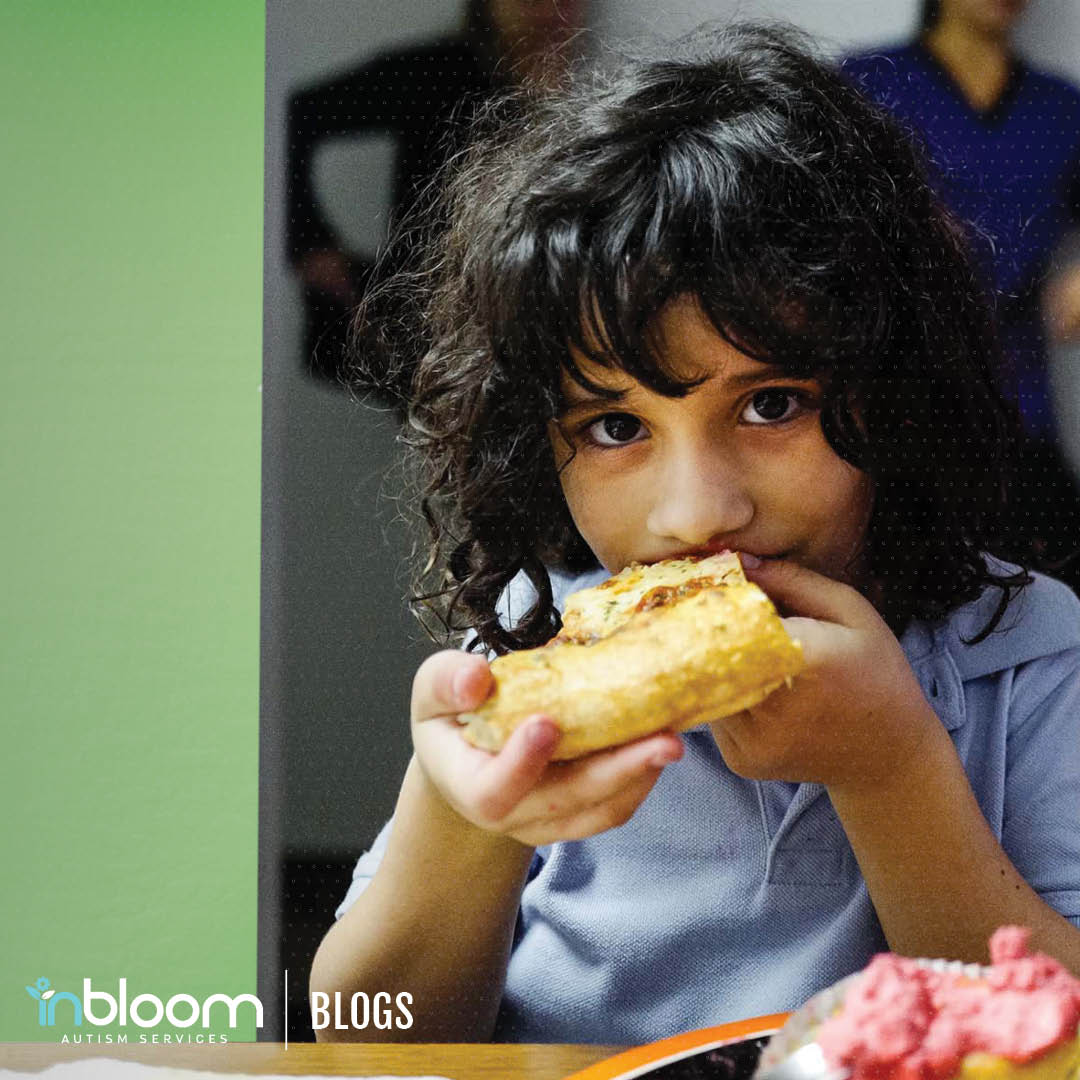Mealtime Made Easier: Practical Tips for Kids Diagnosed with Autism

Ever found yourself nodding along as other parents share their mealtime woes? Things like, “My kid’s a goldfish connoisseur,” or “food touching is a no-go,” or the classic, “chicken nuggets or nothing”? Well, food sensitivities or food aversion is quite common in children diagnosed with autism spectrum disorder (ASD.) Researchers at Marcus Autism Center at Emory University School of Medicine found that children with ASD are five times more likely to have difficulties during mealtimes, including tantrums, extreme food selectivity, and ritualistic eating behaviors. But why is that and how can you help your child receive the nutrition they need? That’s what we’re diving into!
Reasons Behind Picky Eating
But why are children with autism more likely to be labeled as “picky eaters?” A lot of it has to do with sensory processing challenges. That is, struggling to effectively process information from the senses, leads to feeling overwhelmed and behaviors that may seem confusing. This Child Mind Institute article does a great job of further explaining the different sensory processing issues. Food aversion or sensitivities are typically due to sensory processing challenges. Any changes or inconsistencies in flavors or textures of food can be overwhelming for them, so sticking to their ‘tried and true’ meals feels like a safer option. Then, there’s also the possible challenge of chewing and swallowing the food. If your child is still learning how to properly use their oral motor skills, some foods may be easier than others to digest.
Regardless of where your child falls on the mealtime spectrum, we’ve compiled a list of tips to help make mealtime more enjoyable for everyone! These practical suggestions are implemented daily by our team of certified therapists at our InBloom Learning Centers.
6 Steps to Eating
When introducing your child to new foods, be sure to follow these steps: tolerate, interact, smell, touch, taste, and eat! We all know that children diagnosed with autism can sometimes have difficulty with new things of the unknown. Slowly introducing new types of food, textures, and flavors is key in helping your child expand their taste buds. Encourage your child to engage in each of these activities but don’t rush it, allow them to take their time and become comfortable with it.
Practical Tips for Mealtime Success
First and foremost, it’s all about the P-E-P!
Positioning
Before the meal is served, make sure you have a comfortable seating arrangement for your child. When possible, your child should be seated with their feet flat on the floor and the table below the chest. Their elbows should be able to rest comfortably on the table promoting a relaxed dining experience. Not only does this help them stay focused during mealtime, but sitting up straight also makes it easier for the food to go down smoothly. If sitting down at the table is not possible, then consider flexible seating arrangements that better fit your child’s needs.
Environment
Next, create a focused mealtime environment by limiting external distractions. Consider using a visual timer or schedule to help the child understand it’s time to eat. You can also explore fun plating options, divider plates are great for children who don’t like their food to touch. Also, don’t forget to lead by example! Sit with your child and enjoy a fun family meal together!
Preparation
Finally, make sure you properly prepare your child. This means engaging in oral motor tasks to stimulate and prepare the mouth before eating. Activities like playing musical instruments (that engage the mouth), using a whistle, chewing on a chew tube, or blowing bubbles can help create a relaxed eating experience. Consider creating a fun mealtime song, this can also be a fun way of introducing it and getting your child excited to eat!
At InBloom Autism Services, we help children reach their developmental milestones, like daily living skills, through customized ABA Therapy. Learn more!
A few other things to keep in mind during mealtime is how to engage and interact with your child. Describe the properties of the food, things like the color, texture, size, etc. With that, you can also describe your interactions with the food to lead by example. For instance, if it’s pasta night, you can say “I’m going to dip my bread in the red pasta sauce… yummy! Now you try!” Another important part of mealtime should be giving your child choices. You can say “Which do you want first, the banana or the grapes?” This gives your child some autonomy while not overwhelming them with too many choices.
Finally, remember that feeding is a collaborative process. If your child is still struggling to eat, discuss this with your pediatrician, BCBA, and or Occupational Therapist. It’s important to rule out any potential medical problems that might be limiting your child’s food intake. The Autism Speaks Autism Cares Network has also created a toolkit that can help you understand possible feeding issues.
InBloom Autism Services specializes in early intervention ABA Therapy.. Our Therapists undergo training to develop a curriculum specifically designed for children aged 5 and under with autism. Our Learning Centers also offer a safe and enjoyable environment for children to interact with their peers. Learn more about our ABA Therapy program!
Related Blogs:
The Positive Effects of ABA Therapy for Children with Autism




